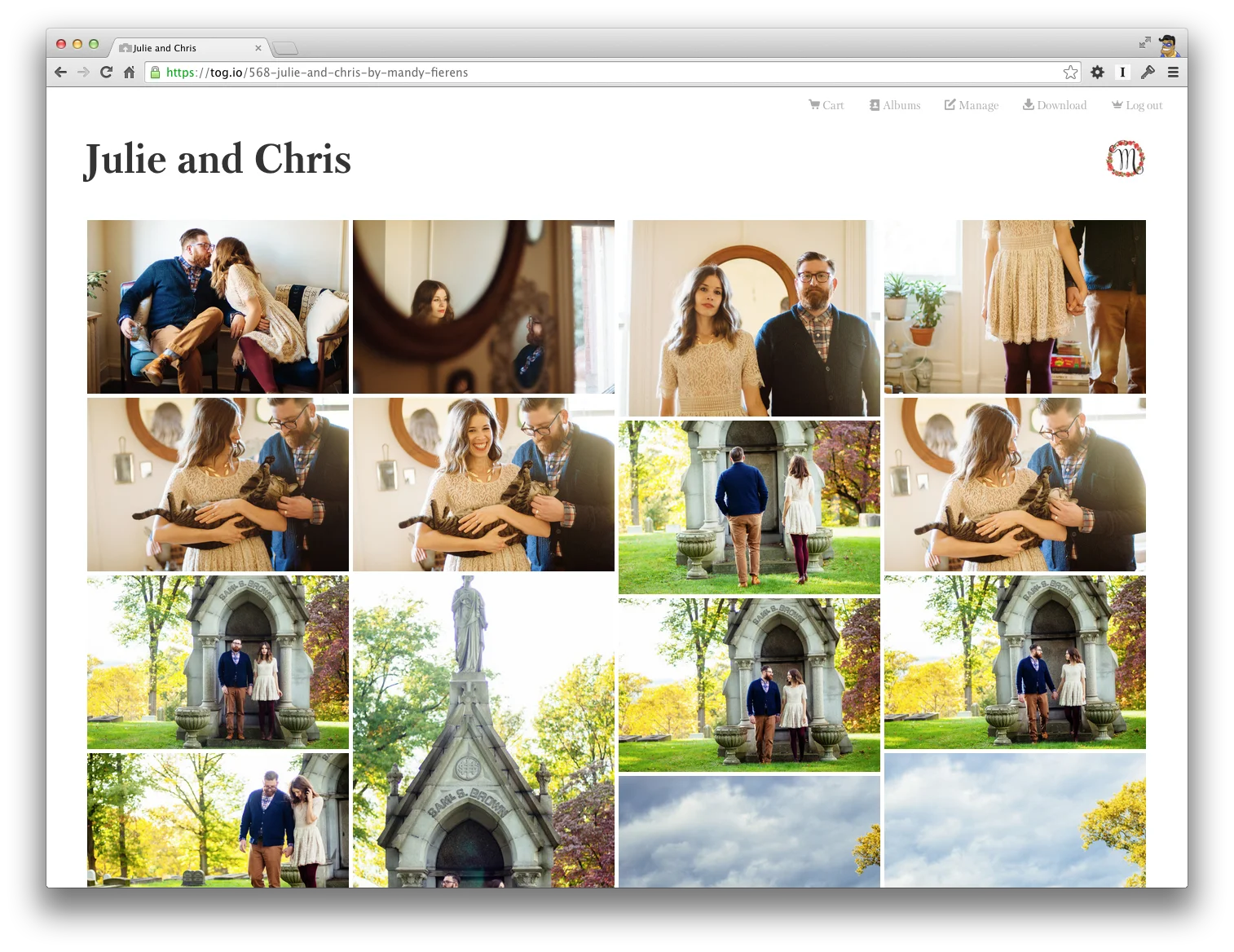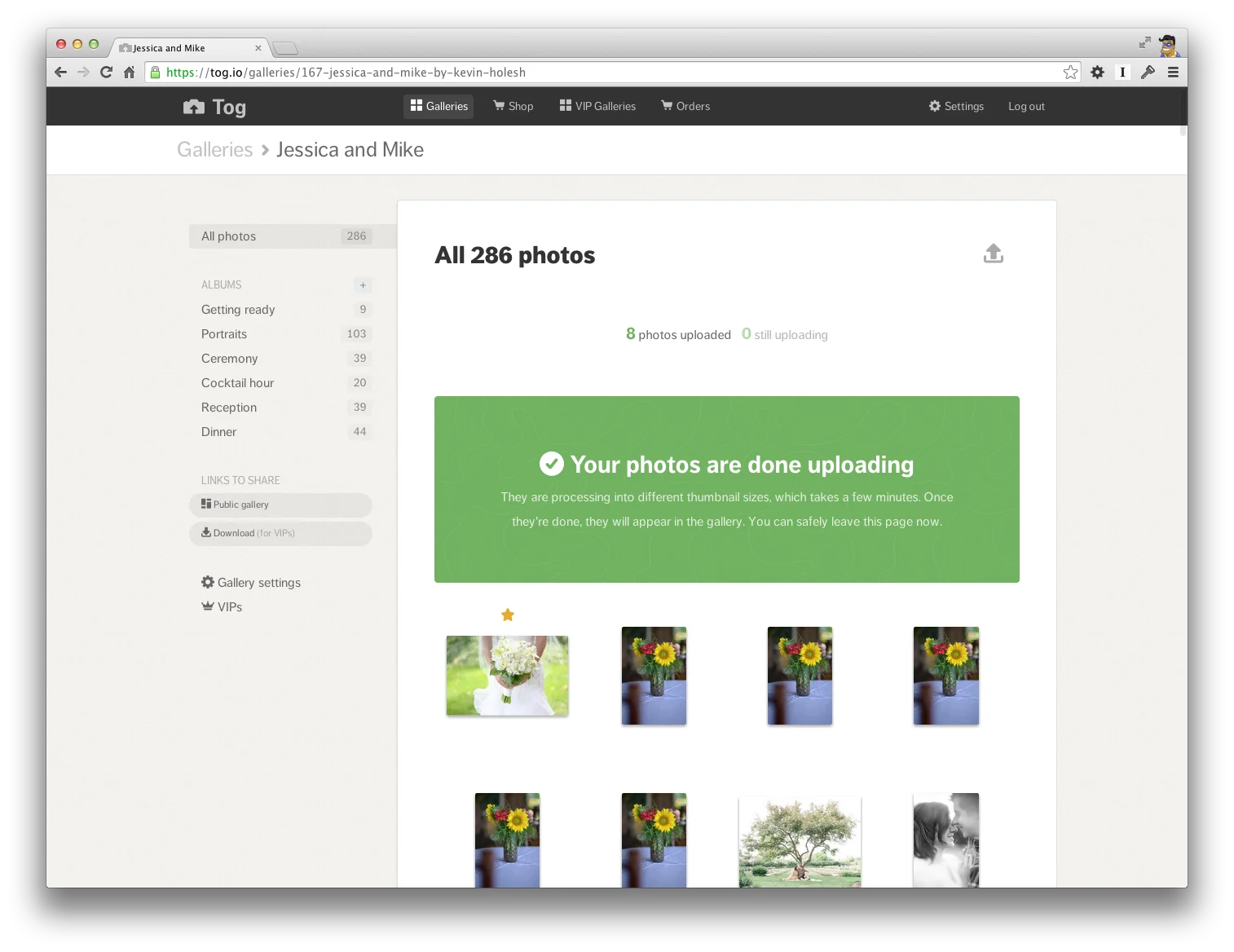
Tog
2013-2014
The Story
Tog was a website for wedding photographers to upload the photos they took and send a gallery to their clients. The bride and groom could then easily share that gallery link with their family and friends, and order prints as they were perusing the photos.

The idea was born out of a need I saw in 2013 from the professional photographers in my life who would spend hours uploading and creating galleries for their clients. I looked at the existing tools and I knew I could build a better version, so as a side project, I did. I worked on Tog for about a year, racking up some expensive server bills. I learned a few important things technically and about running this type of SaaS business, but ultimately, Tog was not a commercial success and I shut it down in 2014.
My Role
- Design
- Ruby on Rails
I built the entirety of Tog. I focused mostly on the backend for the photographer and making the customer facing galleries as simple to use as possible. I wanted the least tech savvy person to be able to use it with confidence.
I handled the system administration, backend development in Ruby on Rails, and the frontend design and coding. I used the Stripe API to handle print orders and Amazon S3 to host the photographs themselves.
What I’m Most Proud Of

The blazing fast file uploads. In 2013, each photo from a pro-level camera was about 8MB and each wedding had a thousand photos. It would take at least an hour to upload all of those before Tog.
I was able to make Tog’s uploads saturate my internet connection at the time (100MB/s up). I did this by having the uploads go directly to Amazon S3 using multipart uploads instead of passing through Tog’s servers first on their way to S3. For an average wedding, a photographer could now upload the full-res photos from the entire wedding in only 10 minutes.
My backend was not the bottleneck — it was whatever internet connection you were on. 💪
The Most Important Lesson I Learned
I was fighting an uphill battle to lure professional wedding photographers away from another tool that was already working for them. Tog had incredibly fast uploads and a simpler mobile-friendly UI, but optimistically, Tog was only about 25% better than my entrenched competitors. I wasn’t able to make it 10X better and it was not an obvious choice for photographers to overcome the pain of switching up their workflow.
My aim with future products is much higher now, and I don’t pursue an idea if what I build will only be a tiny bit better than what’s already out there.